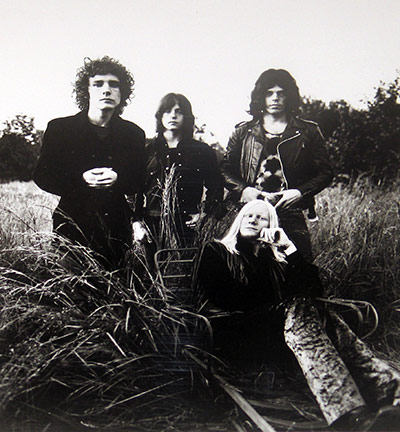-
Introduction
In 1969, Johnny Winter, a Texan guitarist with blazing talent and striking looks, was set to ignite the blues world. His lightning-fast playing and raw power captivated audiences, his music echoing the heart and soul of the blues. With a sound that defied expectations, Winter was on the cusp of stardom. As he shared the Fillmore East stage with the legendary B.B. King, a new blues hero was born.
-
January 1969
January '69: Texas bluesman Johnny Winter, with lightning-fast fingers and a raw, authentic sound, hits New York City. His Fillmore East debut alongside legends like B.B. King cements his status as a rising star.
-
February 1969
February '69 was a whirlwind for Johnny Winter. A record-breaking deal with Columbia, hyped by Clive Davis himself, solidified his stardom. Gigs at Fillmore East and a Boston Tea Party appearance further cemented his reputation as a guitar virtuoso. Media frenzy ensued, with Life and Look covering the "new genuine superstar." Yet, amidst the ballyhoo, Winter remained grounded, focused on upcoming concerts and his debut album.
-
March 1969
Nothing in my collection for March 1969
-
April 1969
April '69: Texas tornado Johnny Winter hits the scene. Critics rave: "gutsiest," "swingingest," "charismatic." Debut album "Progressive Blues Experiment" a raw, high-energy blast, showcasing Winter's fiery guitar and "hoarse crying" vocals. Some find it rough, but most agree: this albino bluesman is a force to be reckoned with. Winter's star is rising fast.
-
May 1969
In May '69, Johnny Winter's debut album "The Progressive Blues Experiment" hit the scene, a raw, live-sounding set showcasing his masterful guitar skills despite hazy acoustics. The album received mixed reviews, with some praising Winter's talent and others criticizing his sidemen and production. Columbia Records signed Winter for a hefty sum and released his self-titled album, which quickly climbed the Billboard charts. Legal disputes arose between Columbia and Atlantic Records over Winter's contract, but the Texas bluesman remained focused on his music, delivering electrifying performances and staying true to his roots. Winter's music resonated with audiences, solidifying his position as a rising star in the blues world.
-
June 1969
June '69: Johnny Winter, the albino bluesman with a mane like pineapple sherbet, sets the rock world ablaze. From Texas roadhouses to the Newport stage, his sizzling guitar licks and haunting vocals captivate audiences. A $650,000 Columbia deal confirms his arrival. But the highlight? Four standing ovations at the Toronto Pop Festival, proving that this "White Tiny Tim" is a force to be reckoned with. Winter is here to stay, and the blues will never be the same.
-
July 1969
July '69: Johnny Winter's star blazes brighter. Fillmore West electrifies early in the month, followed by a Toronto Pop Festival ovation. Newport Jazz Festival sees Winter trade licks with B.B. King. Atlanta Pop Festival adds another feather to his cap, while a mixed bag of reviews follows his L.A. performance. Forest Hills Music Festival solidifies his blues prowess, garnering acclaim from the New York Times. Cleveland and Laurel see packed houses, proving Winter's appeal stretches far beyond Texas. The month closes with anticipation building for Woodstock, leaving no doubt: Johnny Winter's on fire.
-
August 1969
August '69 was a pivotal month for Johnny Winter. Amidst mixed reviews, he opened for Blood, Sweat & Tears at the Hollywood Bowl, showcasing his unique blend of blues. He also graced Woodstock's stage, though overshadowed by more prominent acts. August concluded with a memorable Texas festival, solidifying his presence in the blues revival scene. Winter's talent and the blues' enduring appeal resonated with the youth,
-
September 1969
Johnny Winter, a Texas bluesman with an otherworldly presence, captivates audiences with his raw talent and electrifying guitar skills. Discovered by Steve Paul, owner of the legendary Scene club, Winter's meteoric rise to fame includes a record-breaking Columbia Records deal and sold-out performances at Fillmore East and West. Though critics question his originality, Winter's passion for the blues is undeniable, cementing his status as a true legend.
-
October 1969
In October '69, Johnny Winter's fire blazed across North America. It ignited Massey Hall in Toronto with Whiskey Howl opening, then roared into the Fillmore East alongside Chicago and Blodwyn Pig, as proclaimed by the New York Times. The month culminated in a Boston Garden spectacle, solidifying Winter's status as a rising guitar hero.
-
November 1969
November '69 saw the blues scene heating up. Johnny Winter, the Texas tornado, blew the roof off Fillmore East with his scorching guitar. Lonnie Mack, the Memphis man, returned to the spotlight after years on the road, ready to reclaim his throne. Critics buzzed, comparing the two, but Mack remained unfazed, focused on his music. He had paid his dues, playing in converted airplane hangars and Midwest ballrooms, and now his time had come.
-
December 1969:
December '69: Johnny Winter's star rises with his second album, a blues-rock powerhouse that expands his sound. He even joins Janis Joplin onstage at Madison Square Garden for a fiery jam. Meanwhile, the Hollywood Rock Festival kicks off with a mix of rock and religion, as Billy Graham prepares to spread his message amidst the music.
